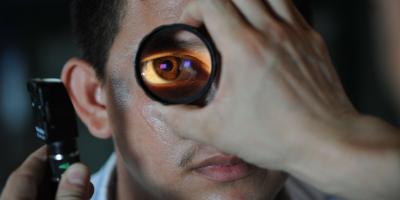Air-powder polishing, applying varnish, whitening, and "straightening" of crooked teeth with dental braces are but a few of aesthetic and prophylactic procedures available at the dentist's office. Still, everyday oral hygiene is the key.
Teeth should be brushed after every meal and in any case no less than three times a day. Other useful measures include dental floss, special brushes for interdental cleaning, mouthwashes, and fluoride toothpases.
If you are not sure whether you clean your teeth right, you might consider consulting your dentist during your next visit. They can also provide you with advice on the suitable type of a toothbrush and toothpaste.
Sealing services for children
Dentists recommend that children undergo dental sealing to protect tooth pits and fissures from dental caries. Such pits and fissures occur on the surfaces of deciduous (or milk) molars, permanent (or adult) foremolars and molars and maxillary (or upper) lateral incisors.
Plaque removal
One of the procedures recommended by dentists is scaling, i.e. the removal of calculus (tartar) caused by the continual accumulation of mineralised plaque on teeth surface.
Dentists advise that this procedure be carried out regularly two times a year. If calculus remains unremoved for a long time, it can lead to gum and periodontium inflammation or even irreversible damage or periodontosis.
Scaling is usually performed by using the so-called ultrasonic scaler. When used on a tooth, the instrument vibrates at a frequency that breaks down the calculus, and the deposits are then rinsed from the teeth. Some practitioners use currettes, hand instruments designed for manual tartar removal.
Tooth polishing and sealing
Another stage recommended after calculus removal is air-powder polishing to remove any deposits and film to further clean the teeth surface. The next stage involves the application of a special polishing paste and a bristle brush or rubber cup.
Finally, the teeth are sealed to protect them from oversensitivity and induce remineralisation.
Teeth whitening
In the meantime, you can use whitening toothpastes or other products for home use, such as bleaching gels and strips with bleaching agents.
If you cannot restore your natural color, you can use in-office bleaching. Popular methods use tailor-made mouth guards, containing a bleaching agent, that are applied by the patient for several nights. Other options include power or light-accelerated bleaching, where a dental agent is applied on the teeth and exposed to the light source. It provides a long-lasting effect for up to several years.
Straight teeth and bite
Straight teeth and proportionate jaw relationships provide increased protection against tooth decay and periodontium diseases, as they facilitate teeth cleaning. Therefore, it is important to align the teeth properly, adjust them within the arches and correct any malocclusions.
The application of orthodontic appliances helps to achieve superior aesthetics and even minimise some articulation disorders.
Removable dental appliances are usually worn by the patient for some 10+ hours a day. Younger paients use it for several years.
Fixed appliances, attached onto teeth with a special glue throughout the treatment period, are becoming increasingly popular nowadays. The treatment period is conditional on the irregularity it is to correct. Usually it lasts about 2 years.









Comments (0)